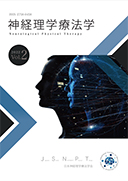Volume 2, Issue 1
Displaying 1-6 of 6 articles from this issue
- |<
- <
- 1
- >
- >|
Contents
-
Article type: Contents
2023Volume 2Issue 1 Pages 0-
Published: March 31, 2023
Released on J-STAGE: March 31, 2023
Download PDF (75K)
Original Article
-
Article type: Original Article
2023Volume 2Issue 1 Pages 1-11
Published: March 31, 2023
Released on J-STAGE: March 31, 2023
Download PDF (964K) -
Article type: Original Article
2023Volume 2Issue 1 Pages 12-23
Published: March 31, 2023
Released on J-STAGE: March 31, 2023
Download PDF (4770K) -
Article type: Original Article
2023Volume 2Issue 1 Pages 24-34
Published: March 31, 2023
Released on J-STAGE: March 31, 2023
Download PDF (744K)
Case Study
-
Article type: Case Study
2023Volume 2Issue 1 Pages 35-44
Published: March 31, 2023
Released on J-STAGE: March 31, 2023
Download PDF (803K)
Editorial Board
-
Article type: Editorial Board
2023Volume 2Issue 1 Pages 45
Published: March 31, 2023
Released on J-STAGE: March 31, 2023
Download PDF (96K)
- |<
- <
- 1
- >
- >|
